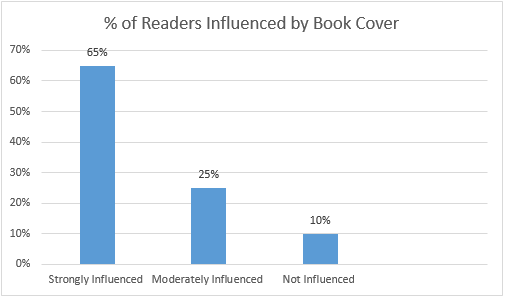What Is The Role Of A Book Cover Designer?

Can you imagine walking into a bookstore where all the books look the same? No colors, no titles, no images, just all the pages bound together. Would you ever pick that book?
A big NO. This situation leads you to step into the shoes of a reader to get an answer to why. You will realize that your first connection with the book is so deep that you understand the theme even before reading a single word. This is the connection through the cover. A cover designer is not just an artist but a storyteller who is creating that powerful first impression, drawing your readers close to the story.
Through this blog, you will learn about the role of a book cover designer and all the essential aspects. So, let’s dig in.
The Job Description of a Book Cover Designer
The core purpose of a book cover designer is to draw the attention of potential readers away from all the other books and sell the idea that your page-turner is the next one they need on their bookshelf. But who is the main soul behind those jumping off the shelves? A book cover designer. Let’s take a look at the role of the book cover designers.
1. A First Impression Is Important
The cover is like a handshake between a writer and a reader. Designers work on blending visuals and style to spark curiosity.
- They use visual hooks like imagery, typography, and layout to attract the eye.
- The design they draw can signal if it is a romance, thriller, fantasy, or an academic work.
- The cover sticks in the mind and helps the readers to recall the book later.
2. Narrating The Story Without Any Words
Although there are words to narrate the story inside, a cover communicates it without any sentences. Designers work on translating the complex themes into simple, visual cues.
- They think deeply before making a color and imagery choice, as this can create the emotional tone before reading begins.
- The key symbols or subtle details are hints of the core narrative.
- They design covers that reflect cultural trends and the expectations of the readers.
3. Balancing Art With Marketing
The role of the designers is not just to create an artistic cover, but they also work to design a cost-efficient marketing tool. The design must persuade the readers to buy the book. It must also work as a promotional tool to increase sales.
- A physical book cover and a digital one are different. To compete in bookstores and online, they need to stand out. Designers look for the ongoing trends and work accordingly.
- Keeping the tone and the color palette consistent for the author’s work helps in building recognition.
- Each book is for a particular age group. The designers craft visuals that match the specific demographics set for the book.
Let’s explore some of the trending cover designs, along with their popularity levels and reader appeal.
| Style | Popularity Level | Reader Appeal |
| Minimalist | High | Modern, clean aesthetic |
| Illustrated | Medium-High | Artistic, personal connection |
| Photographic | Medium | Realistic, professional look |
| Bold Typography | High | Strong, attention-grabbing |
4. A Collaboration With The Author And Publishers
Their role is never isolated. They need to work closely with the writers and the publishing team so the core message of the book remains active and the publishing houses do not face any challenges. To achieve this target:
- They listen and understand the vision of the author and try to interpret it in a visual format.
- They present multiple drafts, refining each of them before delivering the final one that is based on the publisher’s input.
- They bring professional experience and balance it with creativity. This helps with a design that matches the industry norms.
5. All The Tools And The Skills Behind The Curtain
Designing a cover is not just a matter of imagination. You need technical expertise with hands-on experience in using creativity tools to shape each cover.
- The designers use different paid and unpaid graphic software.
- A deep understanding of typography is essential as it helps them to choose a font that complements the story.
- With all these, they pay extra attention to the book layout design like alignment, spacing, and proportions to ensure harmony.
From Vision to Market Success

We have understood the role of a cover designer and know it is more than a decoration. Your designed cover is a blend of storytelling, psychology, and marketing. Now, we need to understand how these creative decisions are impacting the commercial success of the book directly.
An Impact on the Choice of the Reader
The designer aims to create a cover that compels readers to choose a book in the first place and helps authors increase their sales.
- Readers build an emotional connection with the book through its cover, which sparks their curiosity to purchase it.
- Different studies show readers only spend a few seconds deciding whether to pick a book. A compelling cover is one of the significant roles in this decision.
- A polished design suggests professional quality and credibility.
FAQs
What is the role of a book cover designer?
A designer creates the visual look of the book through merging imagery, typography, and layout. This effectively conveys the story and captures readers.
What is the importance of a book cover?
It is the first impression of the story before reading a single word. Your readers will decide to pick or add the book to their cart.
What is the role of the authors in the book cover design?
Authors share their ideas and vision. However, the publishers and designers work together to refine the final version of ideas into a pictorial format.
Do the designers follow a trend?
Designers are updated with the ongoing trends. They ensure the design is appealing to modern readers while still being unique.
The Final Comment
The role of a book cover designer is vital in marketing and making your story appealing before it is read. They work as an all-rounder who creates a spark in the readers to stop, look, and end up purchasing the book. Without getting them on board, an author might not be able to get their book noticed in the crowded market. So, the next time you admire the content of a book, ensure to appreciate the designer of the cover. Remember, the cover is the product of creative choices, technical skills, and strategic thinking.